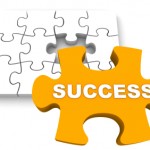 By Dr. Teresa Ray, PCC
By Dr. Teresa Ray, PCC
Organizations spend a lot of time discussing the return on investment for every effort they undertake, and rightfully so. Being a good steward of your resources is important.
The difficult truth, however, is that some initiatives like leadership, development and growth don’t have a measurable return on investment.
Measuring leadership investment is like attempting to catch the wind in a jar — you can’t. However, you can see, feel and measure the impact the wind has on the surrounding area. When you consider what it means to be a leader, you shouldn’t be looking at the return on investment but, rather, the return on impact.
Understanding Your Impact
What would those who work with you really say about their experience? Would they describe you as a good leader — or a great one? Would they spend more time and energy talking about you, or talking about the impact and influence you’ve had on others?
Good or bad, leaders always leave something behind, but it’s my experience as an executive coach that most leaders struggle to answer even the most basic questions about the impact they have. Often, this is because they’re unsure about the legacy they hope to leave or they misjudge the scope of their impact. Published in the journal Organizational Dynamics, a review of multiple studies “consistently found that women leaders under-estimated (i.e., predicted lower) how others viewed their leadership behaviors.”
Without knowing what you hope to leave behind, you fail to give yourself a target. So how do you define your target? It requires self-reflection, self-awareness and an understanding of the type of impact you want to have on others.
Type 1: You impact people on an individual level.
One leader I worked with described her passion for helping others to grow. She strives to add value to the careers of those around her by identifying skill gaps and then invests time in influencing, coaching and growing others. If you asked those around her, they would each tell you exactly how they are better at their jobs and on their teams because of her influence. The key to this type of impact is that it’s individual. She isn’t simply hoping people share her vision. She looks at an individual and determines exactly how she can help them.
Now, you might be thinking that this type of impact requires quite the time commitment. Here’s where I’ll challenge you: Leadership isn’t about you. If you’re leading others, it’s all about them. If you can’t find time to connect, you should examine what’s getting in your way.
Type 2: You impact your team by sharing your unique skill set.
A lot of leaders fall in this category. They focus on growing others in very specific areas, usually defined by what they themselves are skilled at. Examples include effective communication, client or project management, sales, meeting or presentation skills and ethics and integrity.
These leaders are known for their own expertise in these areas and they are always watching for ways to influence and impact others in the same areas. When I talk with the colleagues and employees of these leaders, they each describe how the specific skill they gained by working with their leader has impacted their career.
Type 3: You impact the overall company culture.
In this case, the leader demonstrates the power that comes with remembering there is a heartbeat behind every name tag and a person behind every employee ID number. These are the leaders that influence and impact organizational culture. These leaders show kindness and are considered great listeners. They lead with a coaching style of leadership and carve out time with others. These leaders are beloved by their colleagues and employees. Even after they’ve retired or moved on from the position, employees will describe how they carry the behaviors forward. As one employee I encountered put it: “I stop and listen to my people now and avoid jumping to conclusions because my former boss was a great listener and always had time for me.” Another said, “I learned to ask great questions and allow my employees to think through problems and solutions because I worked for someone who allowed me the space to problem-solve and think out loud without judgment.”
Leaders always leave something behind, good or bad. So, if you haven’t spent time thinking about your legacy as a leader, please do. Sit down in a quiet place, consider the type of impact you want to have and write out your goals. In other words, define your target, so you can achieve a positive return on impact.
Source: Forbes
 by Jennifer Colletta
by Jennifer Colletta



 by
by  by
by  By Dr. Teresa Ray, PCC
By Dr. Teresa Ray, PCC by Laura Gassner Otting
by Laura Gassner Otting